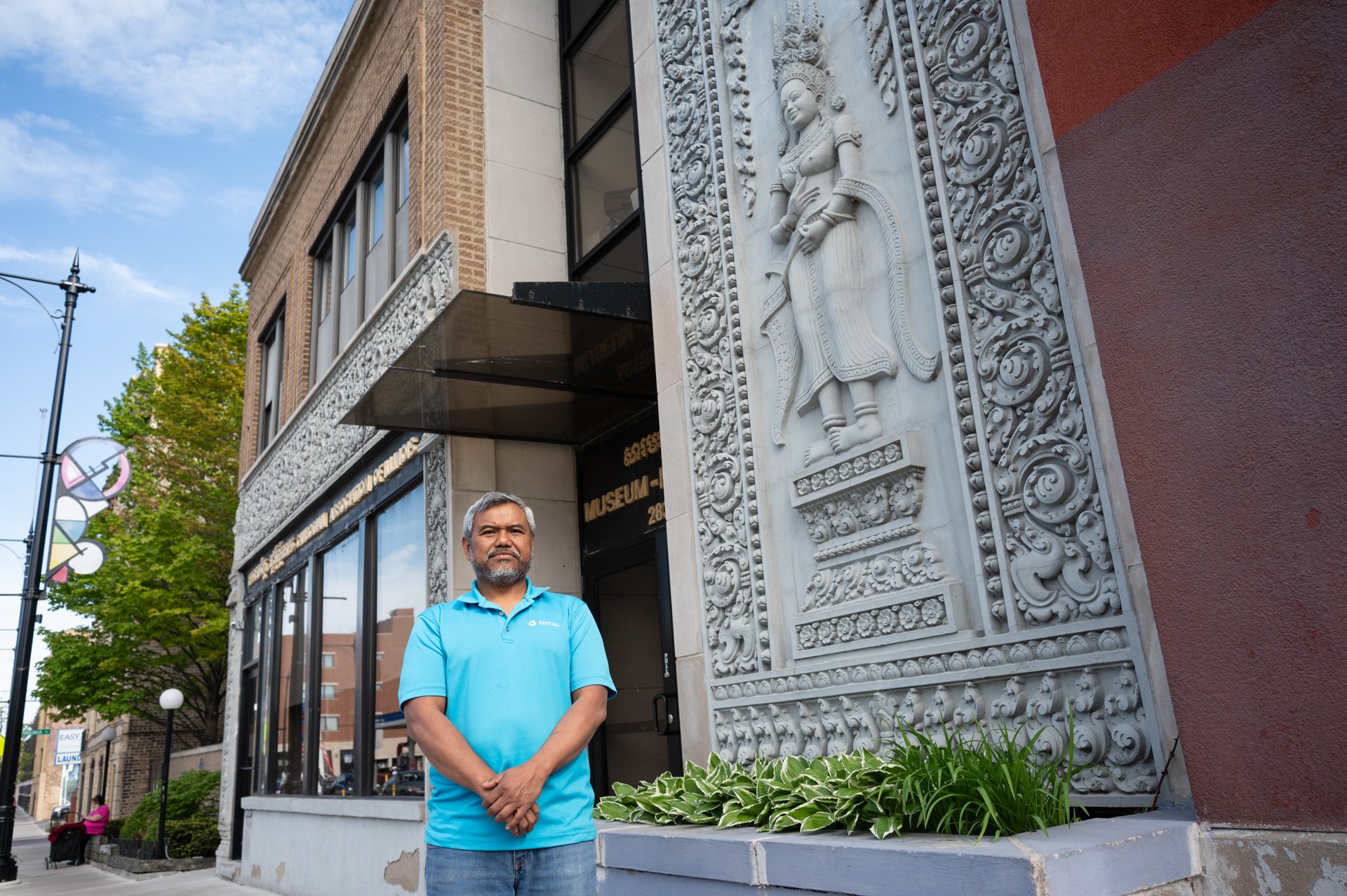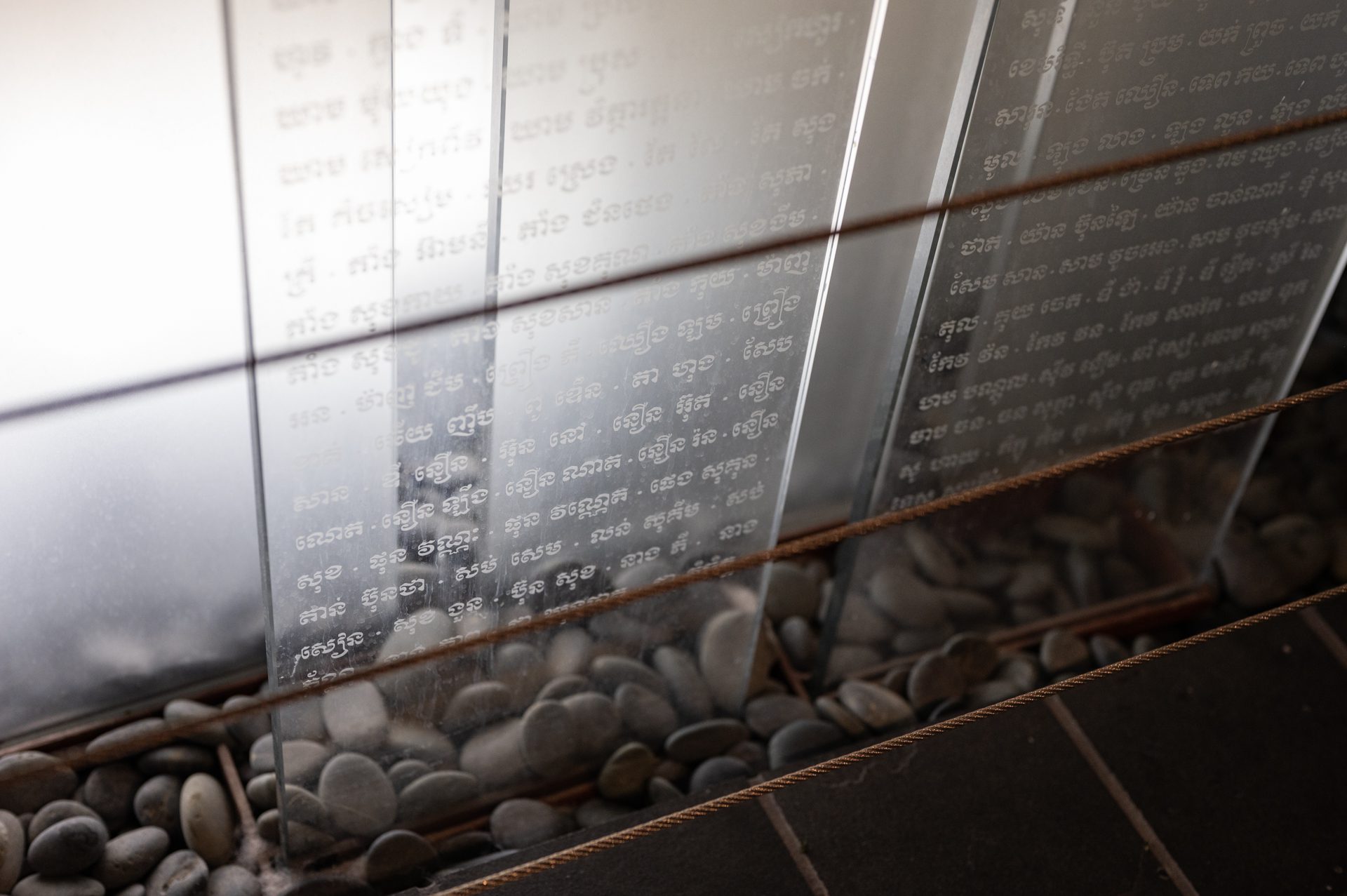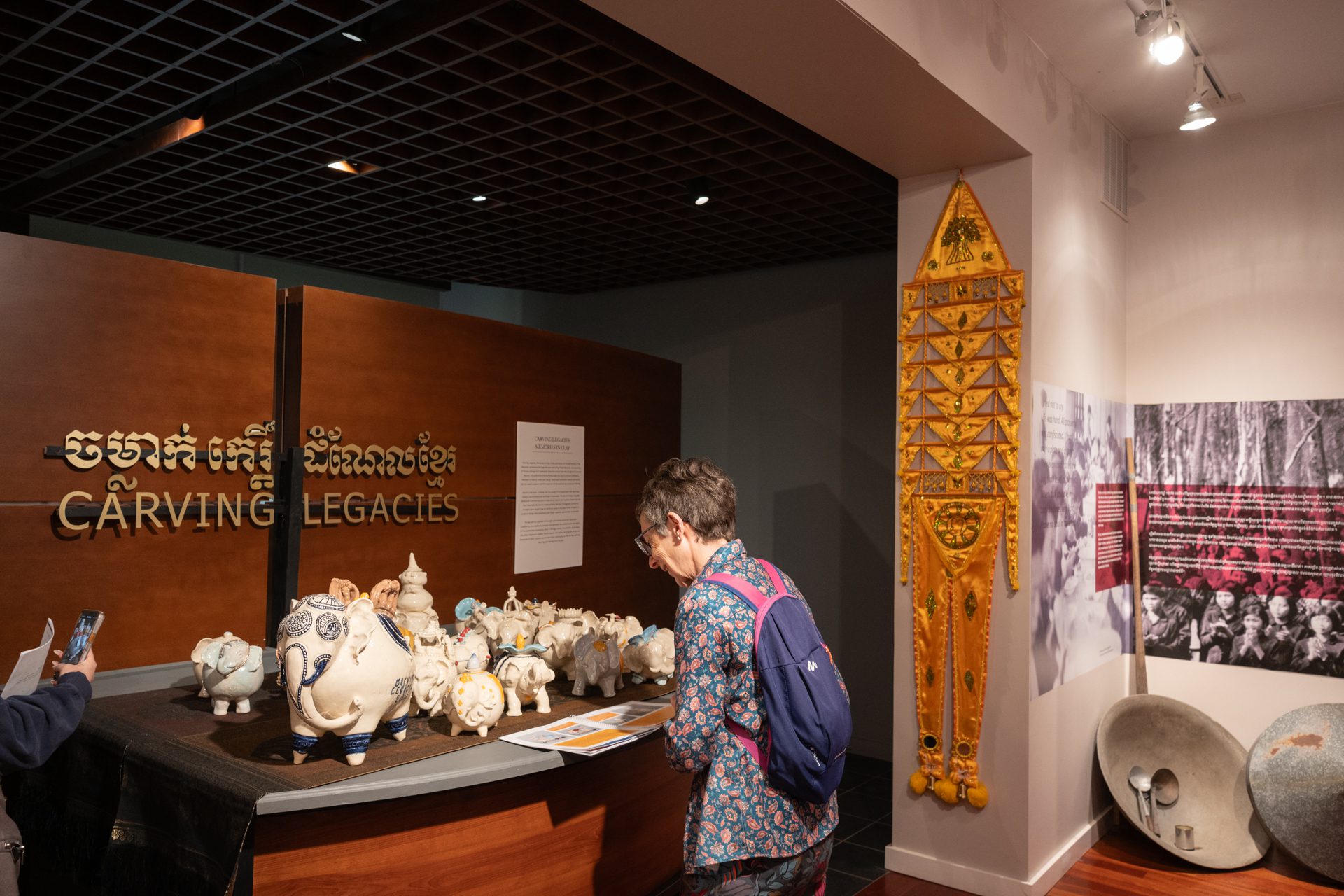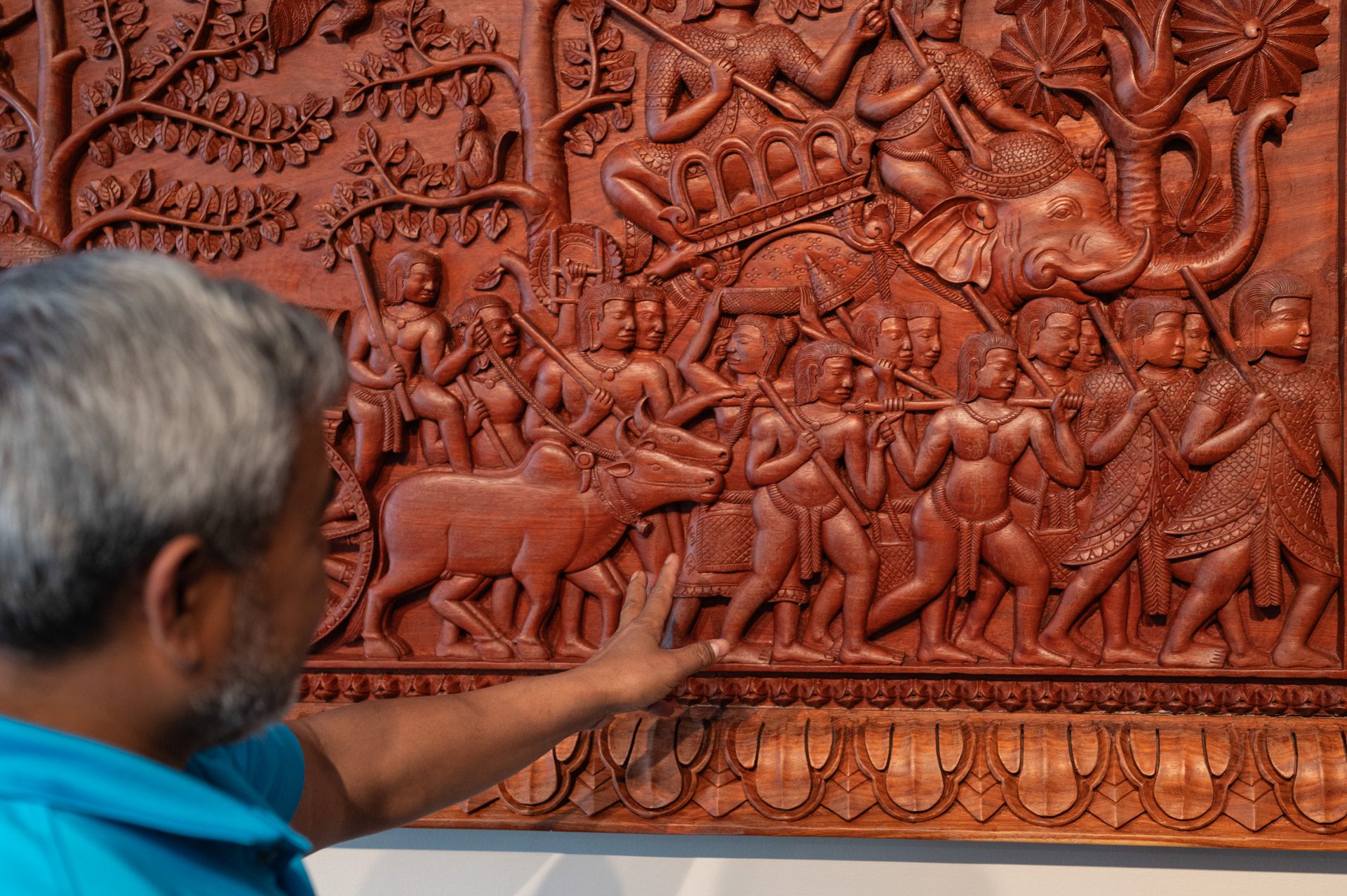 Max Herman/Borderless Magazine
Max Herman/Borderless MagazineThe National Cambodian Heritage Museum will host events aiming to cultivate culture and reunite Chicago’s Cambodian American community with its roots.
A soft glow in the National Cambodian Heritage Museum in Chicago illuminates 80 glass panels – each representing people who died during the Cambodian genocide 50 years ago.
“Remembering Killing Fields” exhibit, located in Chicago’s Lincoln Square neighborhood, is used as a moment of reflection from one of the “greatest crimes of the 20th century.”
“The impact of that experience is still with them,” said Kaoru Watanabe, the museum’s associate director.
News that puts power under the spotlight and communities at the center.
Sign up for our free newsletter and get updates twice a week.
In the 1970s, Cambodia was in a civil war between government forces and the communist party of Kampuchea, commonly known as the Khmer Rouge. After they seized power in 1975, the genocide followed for four years, where up to three million people were murdered.
In Illinois, April 17th is recognized as the historic day of remembrance after officials signed a proclamation earlier this spring.
Museum Board President Laura Ouk hopes exhibits like “the Killing Fields” serve as a reminder to “never forget the past” and help reshape perceptions of the Cambodian community.
She says remembrance cultivates community and culture, while educating younger generations on the Cambodian community’s resilience.

“For me personally, my grandfathers did not survive the genocide,” Ouk said. “This is something that impacts me personally, but also impacts a lot of Cambodians.”
The National Cambodian Heritage Museum hosts events that preserve culture and survivors’ stories.
Around the museum’s walls are quotes by survivors who share their struggles, stating, “The key to survival was hard work and silence.”
Ouk adds that future generations are advocating for other ways to heal by centering on the richness of culture and its people.
“When there is information about us, people just only think of us, you know, in relation to the genocide. But we’re so much more than just the genocide,” Ouk said.
Paul Chhorm, the museum’s executive director, says that historical conversations are essential for understanding and healing.
“I was born during that time [of the genocide], and grew up here, and I basically learned about genocide here because I have no other trace of history to learn from, besides research and from the people who write about it,” said Chhorm.
The Khmer Rouge government targeted artists and intellectuals, destroying their books, closing schools and banning religion.
The museum is working to reverse those efforts by cultivating culture and reuniting people with their roots through the arts, events and youth leadership development activities.

“If you come on a Saturday afternoon or morning, this space will be flooded with kids learning the traditional music,” said Chhorm.
He added that classes aren’t the only thing that helps expand their culture. The wood and ceramic arts also play a role.
“There’s a panel of hardwood carving that we picked from the Bayon Temple in Cambodia that they carve into the Stone to show the Cambodian daily life,” Chhorm said.“That’s probably the most I admire. I can see myself back home.”
Samantha Monje is a journalism student at Northwestern University and a Borderless Magazine Pathway intern.
Correction: 05/20/25 A previous version of this story incorrectly stated that the Remembering Killing Fields exhibit would run until May. The exhibit is set to run year-round.


